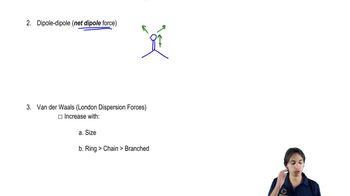- CH3N2+
- HNO3
- N3-
- CH3CONH2
- O3
b. Draw a structure for each of the species that shows approximate bond angles.
c. Which species have no dipole moment?
 Verified step by step guidance
Verified step by step guidance Verified video answer for a similar problem:
Verified video answer for a similar problem:



 11:33m
11:33mMaster Differences between ionic, polar and covalent bonds with a bite sized video explanation from Johnny
Start learning